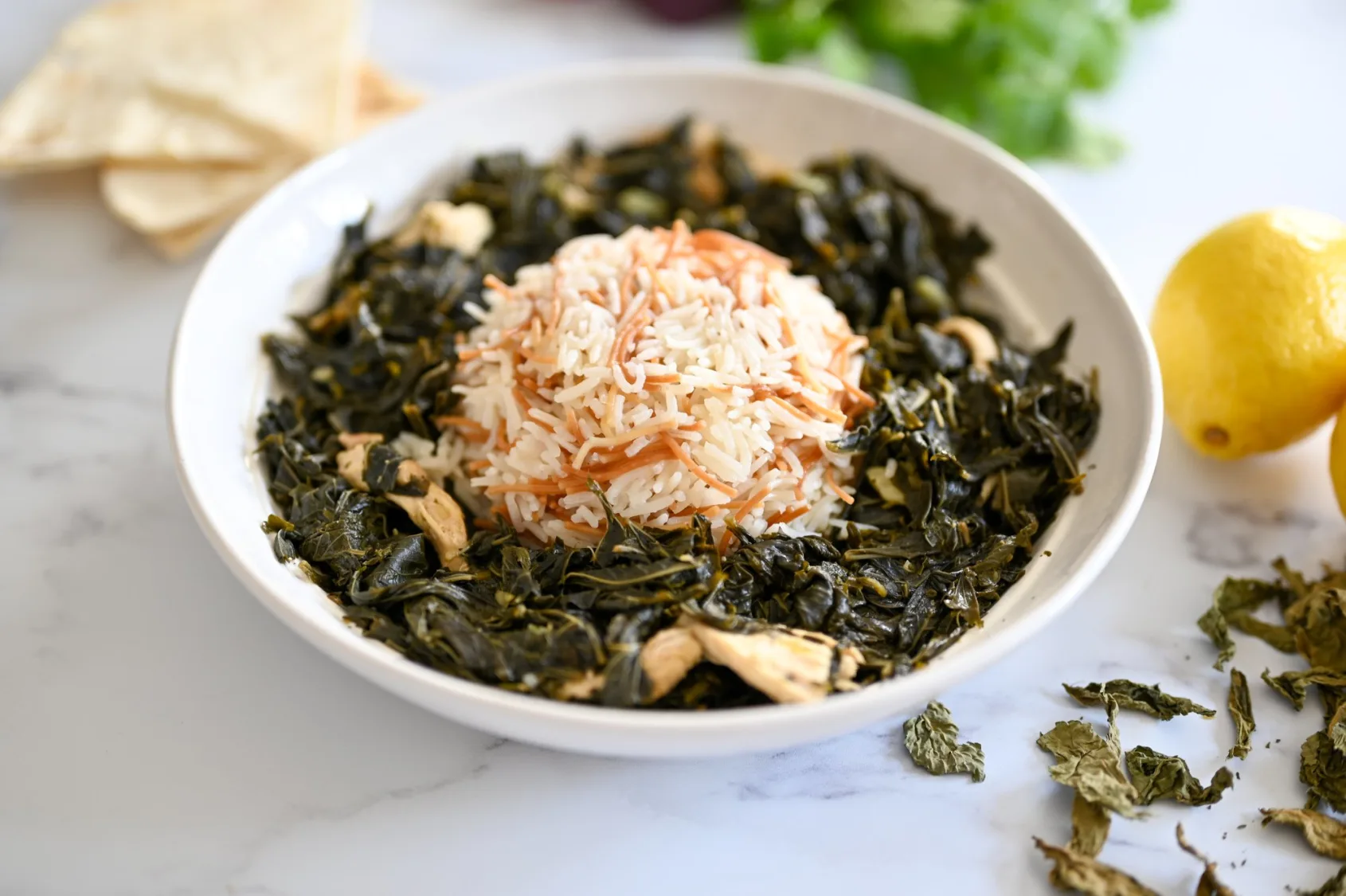
Molokhia
A soup made from jute leaves with chicken or rabbit, garlic and coriander.
Ingredients
- •Molokhia leaves
- •Chicken
- •Garlic
- •Coriander
- •Chicken stock
- •Rice
Instructions
Prepare leaves
Clean and chop molokhia leaves
Cook meat
Cook chicken or rabbit in stock
Make sauce
Prepare garlic and coriander sauce
Combine
Add leaves to stock and simmer
Molokhia, also known as Egyptian spinach or Jew's mallow, is a distinctive Egyptian dish that features dark, leafy greens cooked into a thick, somewhat viscous soup. The dish gets its name from the molokhia leaves, which have been cultivated in Egypt since the time of the pharaohs. When cooked, these leaves create a unique, slightly mucilaginous texture that's beloved in Egyptian cuisine.
The history of molokhia is steeped in royal tradition. Legend has it that a medieval Egyptian ruler once banned the consumption of molokhia, declaring it only fit for royalty. Despite this attempted restriction, the dish remained popular among all social classes and has become a cornerstone of Egyptian home cooking.
The preparation of molokhia is an art that begins with carefully cleaning and finely chopping the leaves. The dish typically starts with a base of chicken or rabbit cooked in broth, though modern variations might use beef or prepare it vegetarian-style. The signature flavor comes from a garlic and coriander sauce known as "ta'leya," which is fried until golden and added to the soup, creating an aromatic and flavorful base.
While the classic recipe remains popular, many Egyptian families have their own variations. Some add a squeeze of lemon juice for brightness, while others might include additional spices like bay leaves or dried coriander. In some regions, you might find molokhia served with a spicy chili paste called shatta on the side for those who enjoy an extra kick.
In Egyptian homes, molokhia is typically served over white rice or with Egyptian bread (aish baladi) on the side. It's often accompanied by chicken, rabbit, or other meats, though the soup itself is sometimes enjoyed as the main dish. During family gatherings and special occasions, a steaming bowl of molokhia is almost always present on the Egyptian dinner table.
From a nutritional standpoint, molokhia is a powerhouse of vitamins and minerals. The leaves are rich in vitamins A, C, E, and K, as well as iron, calcium, and fiber. A typical serving contains around 50-70 calories without the accompanying rice or bread, making it a healthy choice for those watching their caloric intake. The dish is naturally gluten-free (when served without bread) and suitable for most dietary restrictions, though those who are sensitive to foods with viscous textures should be aware of its unique consistency.
